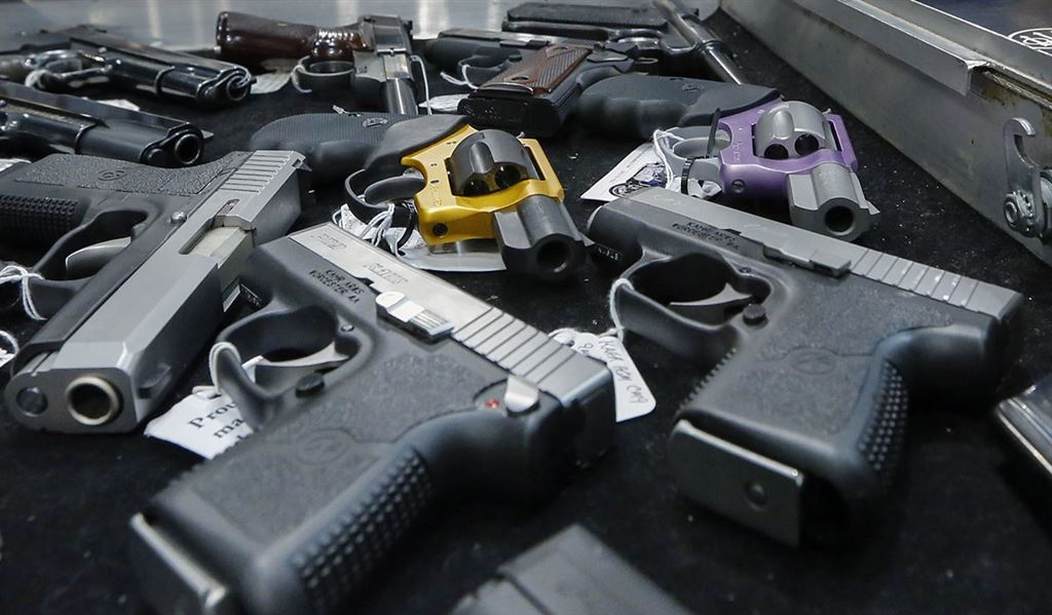The Bureau of Alcohol, Tobacco, Firearms and Explosives (which I still maintain would be a much better name for a convenience store) released a report on guns and crime that is being described as “the most expansive such report in over two decades.” The ATF compiled plenty of data covering crime records from 2017 through 2021, as well as information on the legal sale of guns and firearm accessories. It’s actually two reports and I will warn you in advance that they are long. The overview of recovered “crime guns” (pdf file) is more than fifty pages and it’s followed by a state-by-state breakdown that takes up hundreds of pages in total. I’m not even close to having finished reading all of it, but there are some important highlights to cover here.
If you’ve been watching the news at all lately, you likely won’t be surprised to learn that gun crimes are up. But the report goes to great pains to describe how long it takes from the time a firearm is purchased legally until it shows up at a crime scene. A report from the Associated Press similarly highlights those figures, while downplaying or simply ignoring other important statistics.
The most expansive federal report in over two decades on guns and crime shows a shrinking turnaround between the time a gun was purchased and when it was recovered from a crime scene, indicating firearms bought legally are more quickly being used in crimes around the country.
It also documents a spike in the use of conversion devices that make a semiautomatic gun fire like a machine gun, along with the growing seizure of so-called ghost guns, privately made firearms that are hard to trace.
The report comes as the nation grapples with a rise in violent crime, particularly from guns.
As you can see, the AP comes right out of the gate highlighting the decreased average time between the sale of a gun and when police recovered it at a crime scene. (54% of such weapons were purchased within three years of the crime.) This might lead the casual observer to interpret those figures to mean that people who legally purchase guns are committing a lot of crimes. But that’s obviously not the case.
You have to dig quite a way further down in the article to find the statistics showing that “most guns used in crimes changed hands since their purchase.” That’s an interesting way to phrase it. Saying something has “changed hands” might imply that it was sold or given away to someone else. But that’s not the case for the majority of incidents. Combine that fact with the finding that “more than 1.07 million firearms were reported stolen between 2017 and 2021.” (And almost all of them were stolen from private owners.) Now that’s how so many firearms are “changing hands.” And at the moment that a firearm is stolen it becomes an illegal weapon.
Some other important data that was ignored by the AP is definitely worth a look. I have to give full credit for the heavy lifting here to Braden at Langley Outdoors Academy who dug out many of the pertinent facts. (His video report is embedded below.)
First, you’ve probably heard about the dreaded “gun show loophole” more times than you can count by now. But ATF found that out of more than 1.4 million guns recovered during the five-year period of the study that were able to be traced to an original purchaser, only three percent could be traced back to a purchase from an FFL at a gun show.
Out of a total of more than 1.9 million crime guns (not all of them could be traced to an original purchase), almost seventy percent, more than 1.3 million, were handguns. But you probably already knew that. Only 12.4 percent were rifles, and that covers rifles of all types, not just your scary-looking AR-15s.
Also, there are some very curious data points when it comes to the cities where these various types of crime guns were recovered. Four out of the five cities with the highest percentage of rifles being recovered were in California and Maryland, states with some of the toughest gun control measures in the country. The cities where the highest percentage of pistols were recovered (revolvers were counted separately) were Atlanta, Cleveland, New Orleans, Milwaukee, and Saint Louis. I will leave it up to the reader to guess what else those cities share in common.
There is more data goodness to come, but here is the report from Langley Outdoors Academy I mentioned above. The host really does a great job of showing how the ATF’s own numbers shoot holes (pardon the pun) in the standard gun control narrative we hear from the left. The video is compact, running only a bit more than six minutes, so I strongly recommend you give it a look. (And leave him a thumbs up as well.)








Join the conversation as a VIP Member